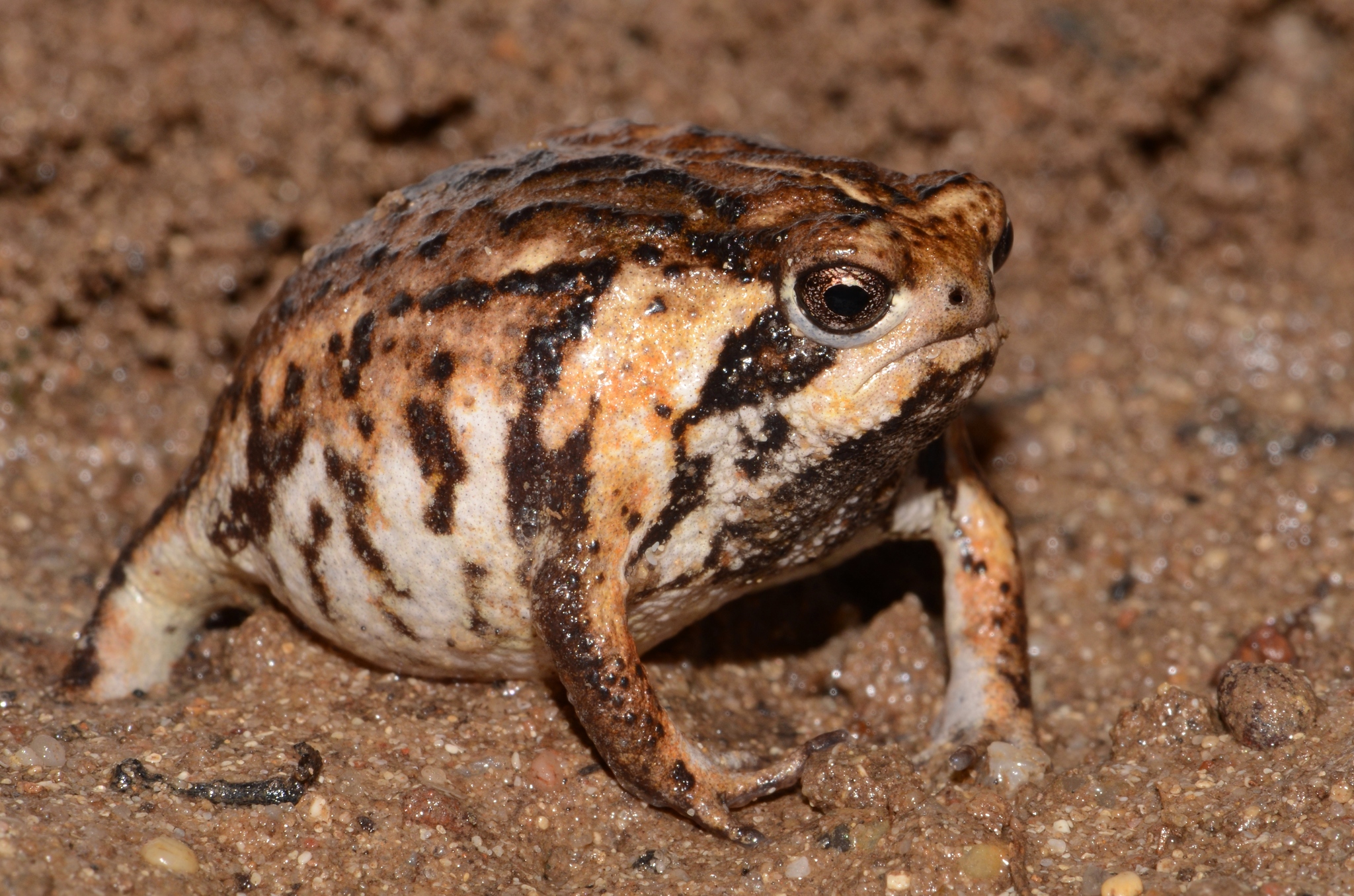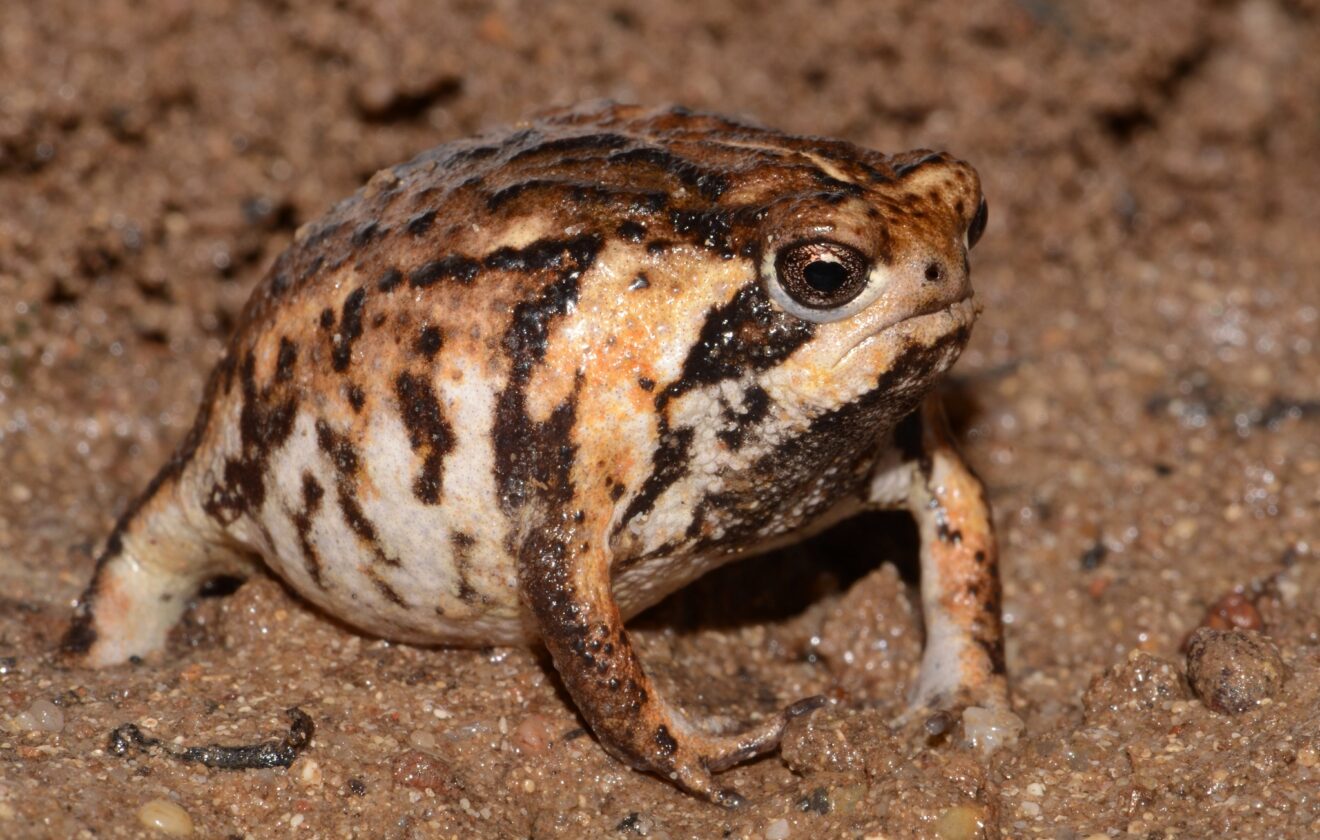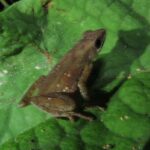Uncovering the Secret World of Rose’s Rain Frog (Breviceps rosei)#
Beneath the moist, leaf-littered soils and amidst the coastal sands of South Africa’s unique landscapes dwells a small amphibian whose intriguing behaviors and subtle charm remain largely unnoticed by the casual observer. Meet Breviceps rosei, commonly known as Rose’s rain frog—a creature whose charm lies not in bold colors or flashy movements, but rather in the quiet sophistication of its lifestyle and form. With an affinity for subterranean secrecy and a face described affectionately by many naturalists as “perpetually grumpy,” this curious amphibian possesses a quirky charisma that’s impossible to ignore.
Though diminutive in size, Breviceps rosei plays a pivotal role within its specialized ecosystem, deeply embedded in ecological narratives far richer than first assumed. From its sub-terrestrial habits and unique reproductive strategies to its delicate position amidst threats like habitat degradation and climate change, the story of Rose’s rain frog captures elements of both wonder and urgency. Join us as we journey beneath the soil’s surface to uncover the fascinating tale of the Rose’s rain frog, Breviceps rosei.
Taxonomy and Classification#
Scientifically identified as Breviceps rosei, this species belongs to the family Brevicipitidae—a specialized family of frogs known for their squat bodies, rounded forms, and burrowing lifestyles. Within this unique amphibian lineage, Breviceps stands as the prominent genus, known commonly as rain frogs due to their emergences triggered largely by rainfall. The name “rosei” honors naturalist Heinrich Rose, whose early insights first shed scholarly light upon this enigmatic amphibian.
Close relatives within the Breviceps genus share similar habits and physical traits, collectively illustrating an evolutionary lineage superbly adapted for life beneath the forest floor and sandy coastal environments that typify their South African habitats. However, each member, including B. rosei, possesses subtle distinctions—be they behavioral idiosyncrasies or minor variations in physical appearance—that reflect millions of years of adaptive refinement to their specific ecosystems.
Natural Habitat#
Rose’s rain frog is predominantly found in parts of South Africa, thriving specifically in the coastal sands and the heath-covered regions known as fynbos ecosystems in the Western Cape Province. This habitat, a biodiversity hotspot rich in vegetation complexity, offers ideal conditions for the frog’s secretive lifestyle. Beneath the well-drained acidic soils, intertwined roots, fallen leaves, and debris provide the ultimate refuge for Breviceps rosei.
Unlike arboreal or highly aquatic frog species, Rose’s rain frog leads a terrestrial subterranean life. It relies profoundly on moisture captured by coastal fogs and winter rains, rarely straying far from its burrows. These self-dug tunnels, expertly created using sturdy hind legs, act as protective chambers where the frog remains during harsh weather, emerging intermittently to feed when humidity is optimal.
The specialized nature of their preferred habitat makes Breviceps rosei particularly vulnerable to alterations in local environmental conditions. As human development encroaches into pristine fynbos and coastal dune habitats, the delicate balance required by this frog becomes increasingly at risk.
Physical Characteristics#
The appearance of Breviceps rosei is possibly its most endearing and memorable trait. Measuring only a modest 30-50 millimeters in length from snout to vent, this tiny frog has an extremely stout, near-spherical body—earning it the affectionate nickname “grumpy avocado” among enthusiastic naturalists. Short limbs and robust hind legs equally adept at digging highlight its subterranean specialization.
Its coloration ranges from sandy beige to reddish-brown, often blending seamlessly with the leaf litter, sandy soil, and decomposing organic matter found throughout its natural habitat. This cryptic coloration strategy is essential for camouflage, reducing predation risks from birds of prey, snakes, and small mammals.
Perhaps its most iconic physical trait is its face, characterized by small, deeply set eyes and a pronouncedly down-turned mouth, creating an expression that appears permanently disgruntled. Beyond this amusing appearance lies a practical adaptation; its compact head and sturdy skull structure aid in its burrowing activities, allowing efficient and secure excavation to form comfortable and protective dens.
Behavior and Life Cycle#
Diet and Feeding Habits#
Rose’s rain frog primarily feeds on a diet consisting of small insects, arthropods, and various invertebrates, including termites, ants, small beetles, and springtails. Predominantly nocturnal and crepuscular—that is, active mainly during twilight hours—it emerges from its burrow when the temperature and humidity conditions are just right. Using a combination of sight and vibration perception, Breviceps rosei employs a sit-and-wait ambush strategy, allowing prey to approach within striking distance.
Mating and Reproductive Strategies#
The courtship and mating behaviors of Breviceps rosei present compelling glimpses into amphibian parental care. Unlike their pond-dependent relatives, Rose’s rain frogs exhibit direct terrestrial development, completely bypassing the tadpole stage—a rare and sophisticated evolutionary adaptation. Males emit a rather melodious, low-frequency call from their underground burrows during the rainy breeding season, inviting females to join them underground within their chambers.
Once a mate is drawn beneath the soil, an unusual behavior unfolds: the female deposits eggs in protective underground chambers crafted patiently by the male. Here, the fertilized eggs develop directly into miniature froglets, fully functional and independent upon hatching. This method eliminates vulnerability to aquatic predators and desiccation, offering offspring a safe haven conducive to survival.
Ecological Role#
Breviceps rosei serves as both predator and prey in its ecological niche, helping to maintain the delicate balance within its natural habitat. As a predator, the frog manages insect populations that, unchecked, could negatively impact vegetation health and growth. Conversely, it provides essential nourishment for predators further up the food chain, fulfilling the cyclical nature integral to ecosystem stability.
Furthermore, its sensitivity to habitat changes and disturbances positions Breviceps rosei as an important indicator species. Population fluctuations within this species can signal shifts in environmental health—an invaluable alert for conservationists and ecologists seeking preemptive intervention within threatened ecosystems.
Threats and Conservation Status#
Currently, the International Union for Conservation of Nature (IUCN) classifies Breviceps rosei as Near Threatened. Habitat loss from urbanization, agriculture expansion, and invasive plant species that alter native habitats increasingly jeopardizes its fragile existence. Furthermore, climatic shifts prompt reduced rainfall and altered moisture regimes, directly impacting the frog’s reproductive success and survival thresholds.
Conservation initiatives emphasize habitat protection, restoration, and advocacy within local communities. Strategic actions aim to raise public awareness, ensuring that the intricate ecological value of Rose’s rain frog and its cherished habitats are both recognized and prioritized in regional planning and development decisions. Preserving the delicate fynbos ecosystems and coastal dunes not only safeguards Rose’s rain frog, but countless other unique, interconnected flora and fauna.
Cultural and Scientific Significance#
While not broadly featured in folklore, Breviceps rosei has earned immense respect within scientific and conservation communities. Its unique reproductive strategies, burrowing behaviors, and sensitivity to environmental shifts serve as vital research focal points, shedding light on amphibian adaptation, evolutionary biology, and climate resilience.
Moreover, due to their quirky appearance and intriguing lifestyle, Rose’s rain frog often garners widespread public affection through documentary features, wildlife photography, and online content. Acting somewhat as an ambassador species, it invites broader conservational awareness and empathy, reminding humanity of the silent wonders dwelling unseen beneath our feet.
Conclusion#
The story of Rose’s rain frog, Breviceps rosei, goes far beyond a mere tale of biological curiosity. It is one of resilience, adaptation, ecological interdependence, and the urgent imperative of stewardship in conserving Earth’s diverse life forms. Through understanding and appreciation, we are called not only to marvel at the delicate existence of this remarkable creature hidden in South Africa’s coastal sands, but also to advocate passionately for its continued preservation. For in conserving Breviceps rosei, we secure not just the survival of one amphibian, but countless others dependent on the ecosystem it so gracefully occupies.















